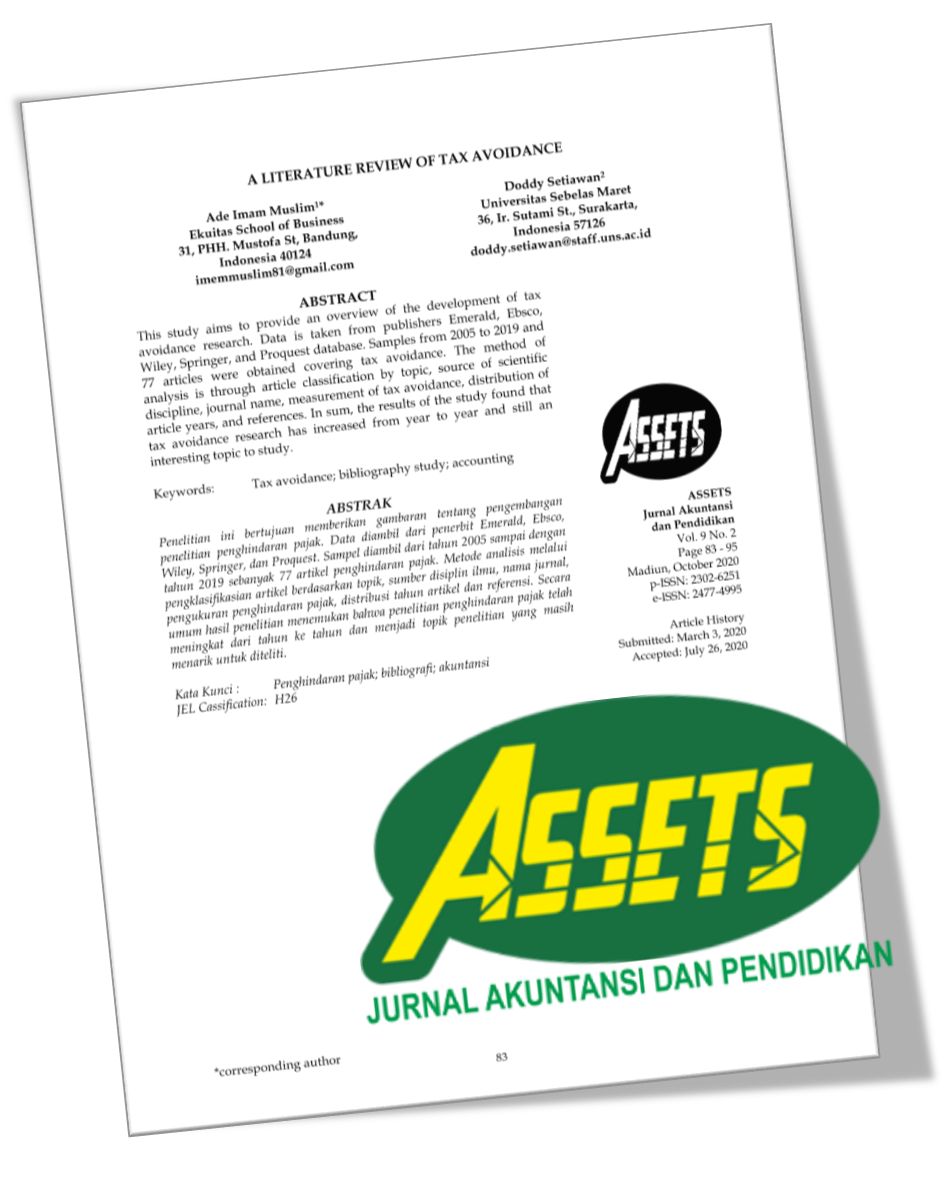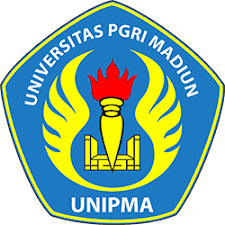CREATING HARMONY AND SUSTAINABILITY THROUGH RAMPAK NAONG BRINGEN KORONG - BASED MANAGEMENT CONTROL SYSTEM
Abstract
ABSTRACT
This research aims to empirically see how leaders' role in creating tone as a form of culture-based Management Control System. This study uses a qualitative interpretive approach to obtain a holistic picture of a unique phenomenon, the story of the tobacco trading business in Bondowoso, which Madurese workers dominate. Business practice is thick with the value of "Rampak Naong Bringen Korong" as an alternative spirit of SPM based on local wisdom. The results of this study seek to build a conceptual framework for MCS based on local wisdom "Rampak Naong Bringen Korong" which is abstracted from various empirical field findings expected to maintain balance, accountability, business order, and sustainability.
ABSTRAK
Penelitian ini bertujuan untuk melihat secara empiris bagaimana peran pemimpin dalam menciptakan tone sebagai salah satu bentuk dari Sistem Pengendalian Manajemen berbasis budaya. Penelitian ini menggunakan pendekatan kualitatif interpretif untuk mendapatkan gambaran holistik tentang sebuah fenomena unik, kisah usaha dagang tembakau di Bondowoso yang didominasi oleh pekerja suku Madura. Praktik bisnis yang kental dengan nilai “Rampak Naong Bringen Korong” sebagai spirit alternatif SPM berbasis kearifan lokal. Hasil dari penelitian ini berusaha membangun sebuah kerangka konseptual SPM berbasis kearifan lokal “Rampak Naong Bringen Korong” yang disarikan dari berbagai temuan empiris lapangan yang diharapkan akan menjaga keseimbangan, akuntabilitas, keteraturan bisnis dan sustainability.
Keywords
Full Text:
PDFReferences
Amin, M. (2018). Rampak Naong dalam Membentuk Tindakan Prososial Sebuah Kearifan Lokal Berupa Peribahasa Madura Yang Menekankan Hidup Tentram dan Rasa Kekeluargaan. 137–150.
Baker, C. R. (2011). A discussion of poststructuralist and postmodernist positions in the work of Norman Macintosh. In Critical Perspectives on Accounting (Vol. 22, Issue 2, pp. 110–117). https://doi.org/10.1016/j.cpa.2010.06.009
Birnberg, J. G., & Snodgrasst, C. (1988). Culture and Control: A Field Study. In Accounting Organizations and Society (Vol. 13, Issue 5).
Cai, Y., Kim, Y., Li, S., & Pan, C. (2019). Tone at the top: CEOs’ religious beliefs and earnings management. Journal of Banking and Finance, 106, 195–213. https://doi.org/10.1016/j.jbankfin.2019.06.002
Chaudhary, S., Dhir, A., Ferraris, A., & Bertoldi, B. (2021). Trust and reputation in family businesses: A systematic literature review of past achievements and future promises. Journal of Business Research, 137(July), 143–161. https://doi.org/10.1016/j.jbusres.2021.07.052
Dorfman, P. W., Howell, J. P., Hibino, S., Lee, J. K., Tate, U., & Bautista, A. (1997). Leadership in Western and Asian countries: Commonalities and differences in effective leadership processes across cultures. Leadership Quarterly, 8(3), 233–274. https://doi.org/10.1016/S1048-9843(97)90003-5
Dumitriu, C., Timofti, I. C., Nechita, E., & Dumitriu, G. (2014). The Influence of the Locus of Control and Decision-making Capacity upon the Leadership Style. Procedia - Social and Behavioral Sciences, 141, 494–499. https://doi.org/10.1016/j.sbspro.2014.05.086
Efferin, S. (2015). Akuntansi, Spritualitas dan Kearifan Lokal Beberapa Agenda Penelitian Kritis. Jurnal Akuntansi Multiparadigma, 6(3). https://doi.org/10.18202/jamal.2015.12.6037
Eltivia, N., Ekasari, K., Wahyuni, H., & Soedarso, E. H. (2019). Integrasi Budaya dalam Pendidikan Akuntansi untuk Mencapai Keunggulan Kompetitif Lulusan. Assets: Jurnal Akuntansi Dan Pendidikan, 8(2), 138. https://doi.org/10.25273/jap.v8i2.4112
Fischer, D. (2013). Setting The Tone At The Top: Defining Moments in Leadership From The Hebrew Bible. https://ssrn.com/abstract=2285181
Förster, K., & Kanske, P. (2022). Upregulating positive affect through compassion: Psychological and physiological evidence. International Journal of Psychophysiology, 176(September 2021), 100–107. https://doi.org/10.1016/j.ijpsycho.2022.03.009
Grabner, I., Klein, A., & Speckbacher, G. (2022). Managing the trade-off between autonomy and task interdependence in creative teams: The role of organizational-level cultural control. Accounting, Organizations and Society. https://doi.org/10.1016/j.aos.2022.101347
Jonge, H. D. (2011). Garam, Kekerasan, dan Aduan Sapi; Esai-Esai tentang Orang Madura dan Kebudayaan Madura. LKiS Printing Cemerlang.
Li, J. (2012). Cultural Foundations of Learning: East and West. . Cambridge University Press.
Makalalag, S. U., Sukoharsono, E. G., & Djamhuri, A. (2020). Kearifan Lokal Sebagai Simbol dalam Keputusan Kebijakan Penganggaran Daerah. Jurnal Akuntansi Multiparadigma, 11(2). https://doi.org/10.21776/ub.jamal.2020.11.2.21
Merchant, K., & Stede, van Der. (2014). Management Control Systems Performance Measurement, Evaluation, and Incentives (3rd ed.). Pearson Education .
Putra, C. G. B., & Muliati, N. K. (2020). Spirit Kearifan Lokal Bali dalam Akuntabilitas Desa Adat. Jurnal Akuntansi Multiparadigma, 11(3). https://doi.org/10.21776/ub.jamal.2020.11.3.32
Sadik, A. S. (2014). Memahami Jati Diri, Budaya dan Kearifan Lokal Madura. Balai Bahasa Kementerian Pendidikan dan Kebudayaan.
Soeherman, B. (2017). Ramayana Walmiki: Eksplorasi Holistik Sistem Pengendalian Manajemen. Jurnal Akuntansi Multiparadigma. https://doi.org/10.18202/jamal.2017.04.7040
Staicu, A. M., Tatomir, R. I., & Lincă, A. C. (2013). Determinants and consequences of “Tone at the Top.” International Journal of Advances in Management and Economics, 2(2), 76–88.
Takdir, M. (2018). Potret Kerukunan Berbasis Kearifan Lokal: Implementasi Nilai-Nilai Harmoni dalam Ungkapan “Rampak Naong Bringen Korong” dalam Kehidupan Masyarakat Madura. Khazanah: Jurnal Studi Islam Dan Humaniora, 16(1), 73. https://doi.org/10.18592/khazanah.v16i1.2057
Widhianningrum, P., & Amah, N. (2014). Akuntansi Ketoprak: Sebuah Pendekatan Etnografi Masyarakat Seni Ketoprak Di Pati. Assets: Jurnal Akuntansi Dan Pendidikan, 3(2), 136. https://doi.org/10.25273/jap.v3i2.1218
Article Metrics
Abstract has been read : 406 timesPDF file viewed/downloaded: 0 times
DOI: http://doi.org/10.25273/jap.v11i1.10322
Refbacks
- There are currently no refbacks.
Copyright (c) 2022 Bonnie Soeherman; Sharon Leonata Itam

This work is licensed under a Creative Commons Attribution-ShareAlike 4.0 International License.
ASSETS: Jurnal Akuntansi dan Pendidikan is supported by
ASSETS: Jurnal Akuntansi dan Pendidikan is indexed by
| | | ||||
| | | | |

ASSETS: Jurnal Akuntansi dan Pendidikan is licensed under a Creative Commons Attribution-ShareAlike 4.0 International License.











